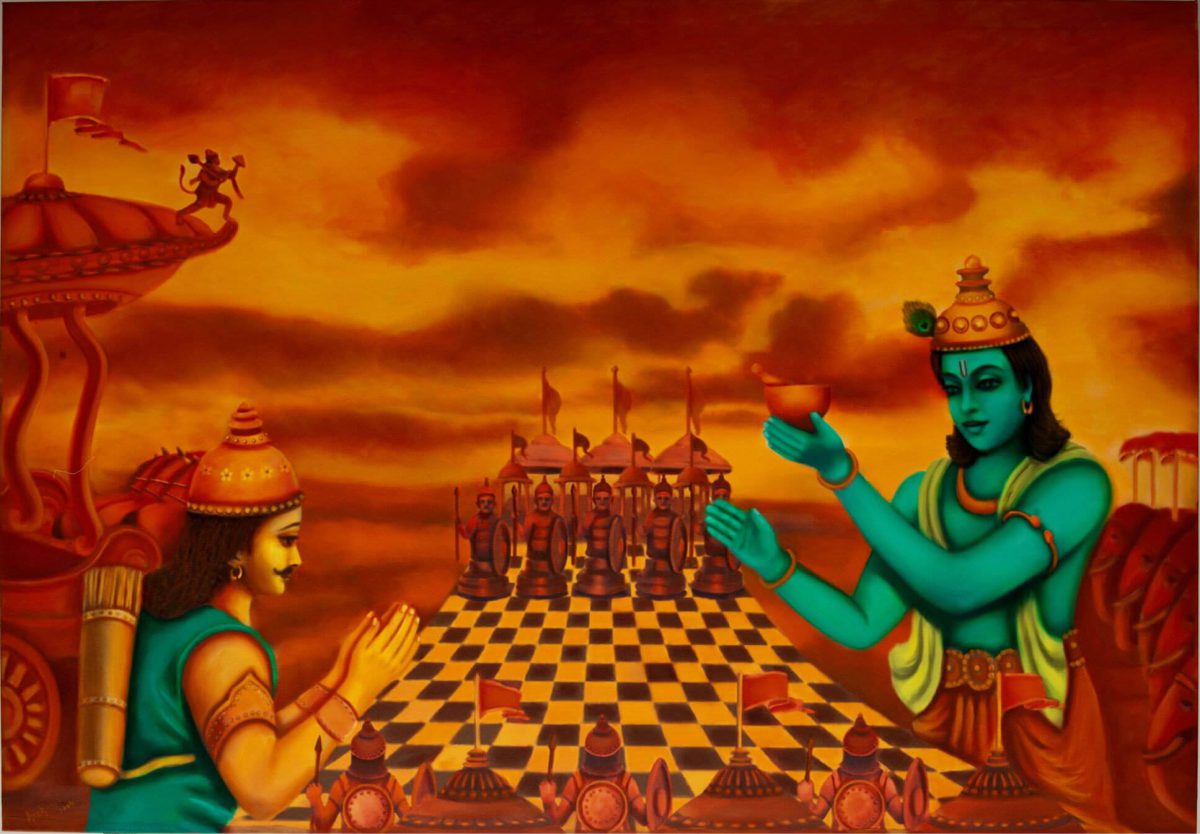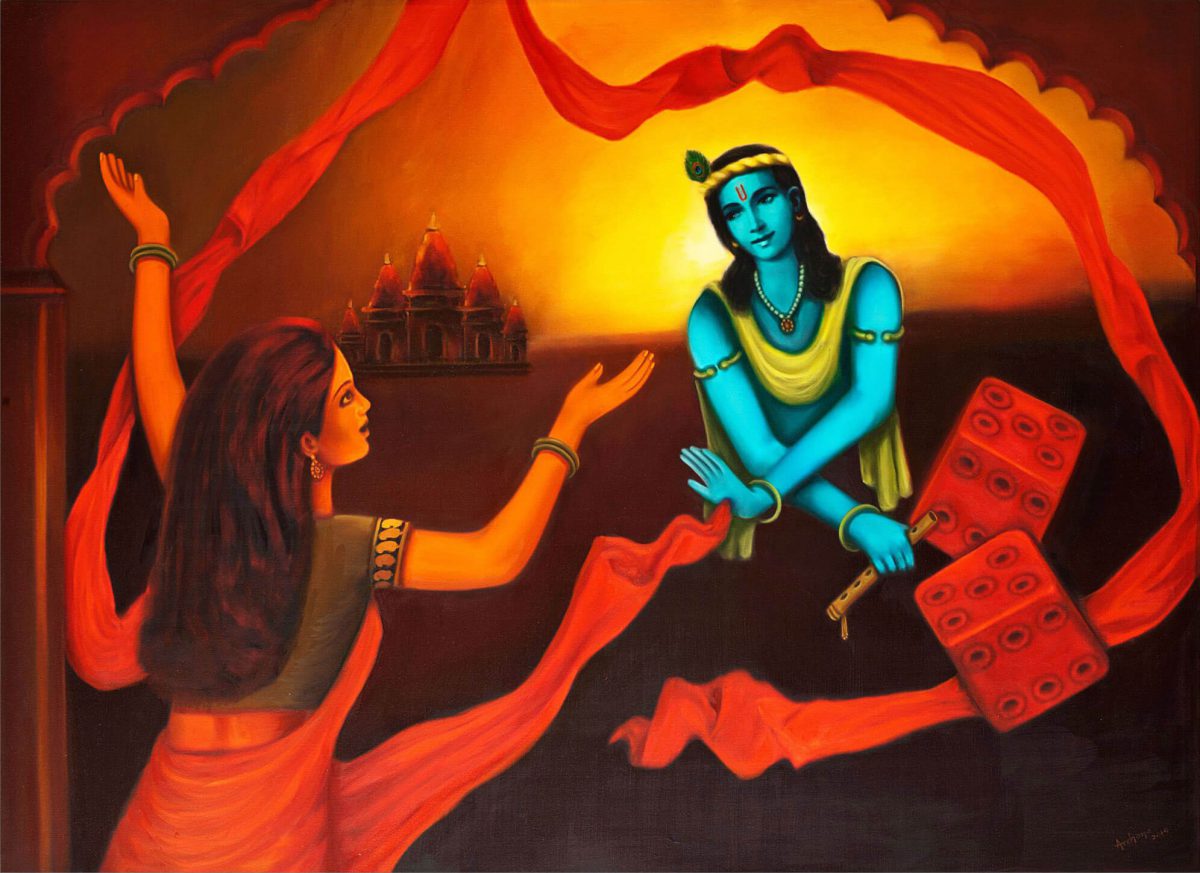The Bhagavad-Gita or Gitopadesh is the timeless sermon given by Lord Krishna to Arjuna in the battlefield of Kurukshetra when Arjuna, just before the commencement of war with Kauravas, developed moral conflicts within himself, realising the futility of war with his own family members. After submitting before Krishna many noble and moral reasons why he wished not to fight, Arjuna cast his weapons aside, overwhelmed with grief.
Arjuna asked Krishna for guidance and became His disciple. Lord Krishna took up the role of Arjuna’s Spiritual Master and enlightened Arjuna about Jivatama (the living entity), Prakriti (material nature), Kala (time), Karma (activity) and Ishwara (God) and revealed His Divine Cosmic form to Arjuna who then completely surrendered himself to Lord Krishna and got ready to fight, having conquered his inner turmoil.
Everyone within the material world is suffering from the repeated birth and death. Bhagavad-gita provides the real cure to this suffering i.e. release from the cycle of birth and death.










